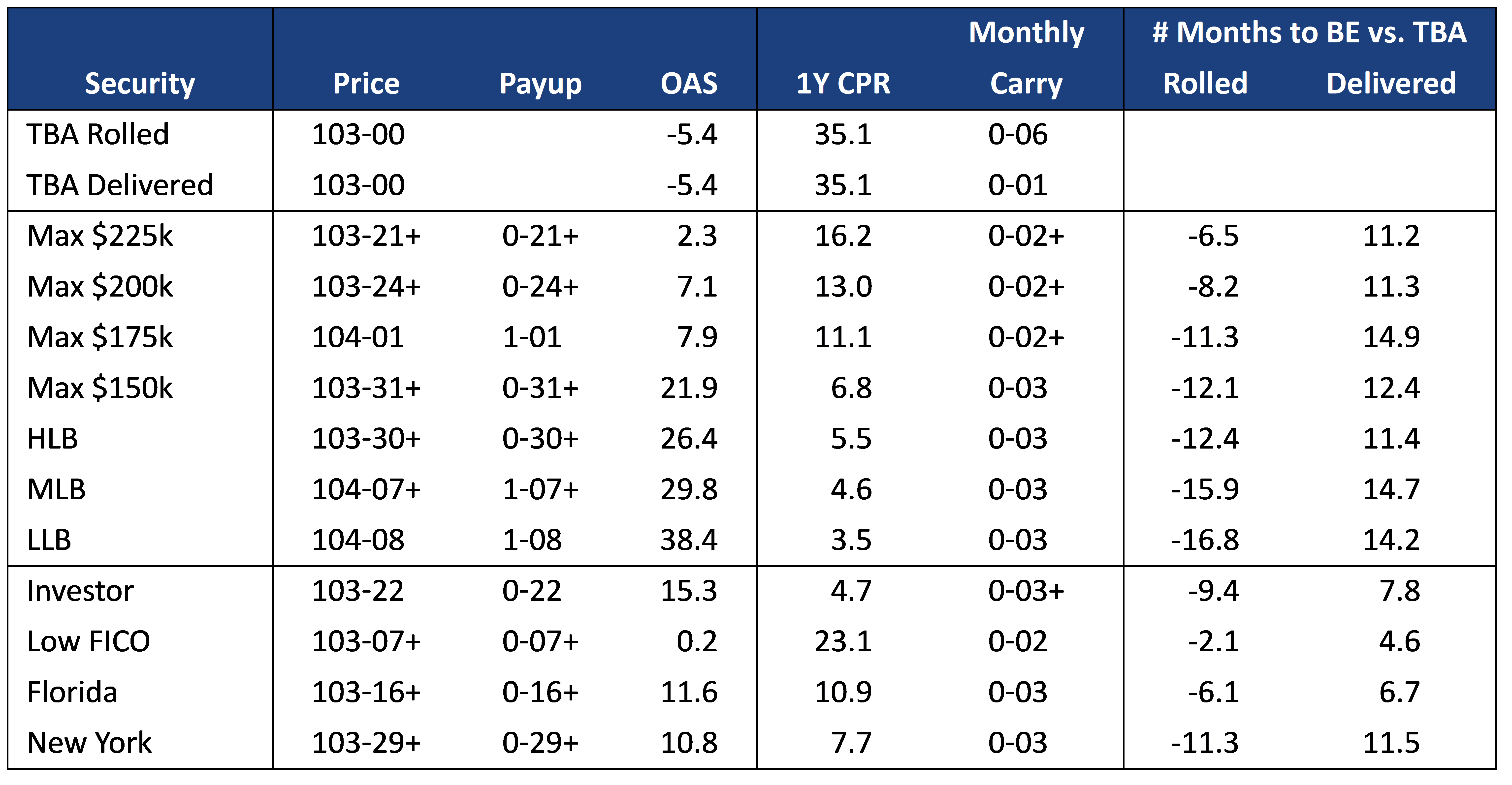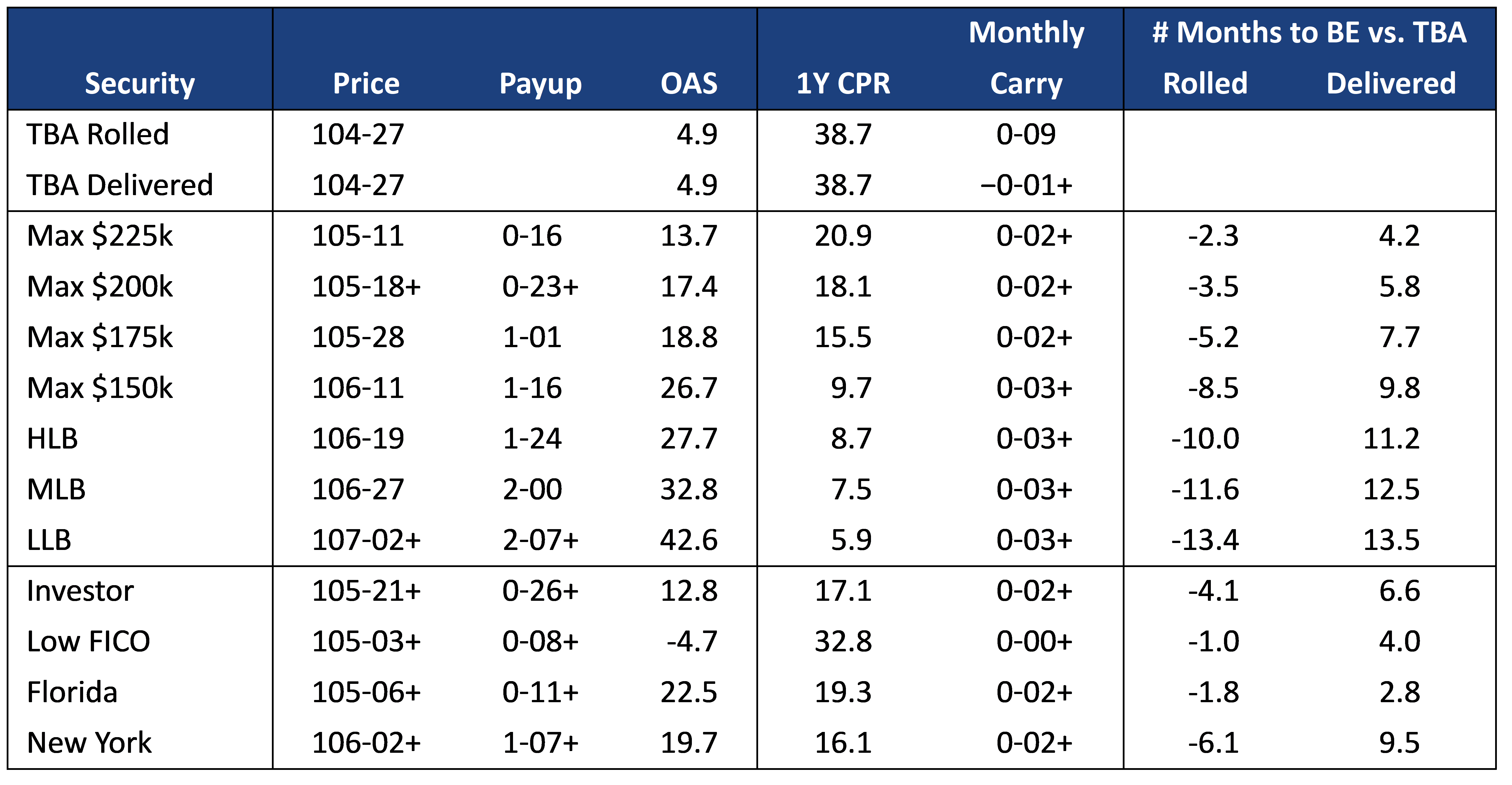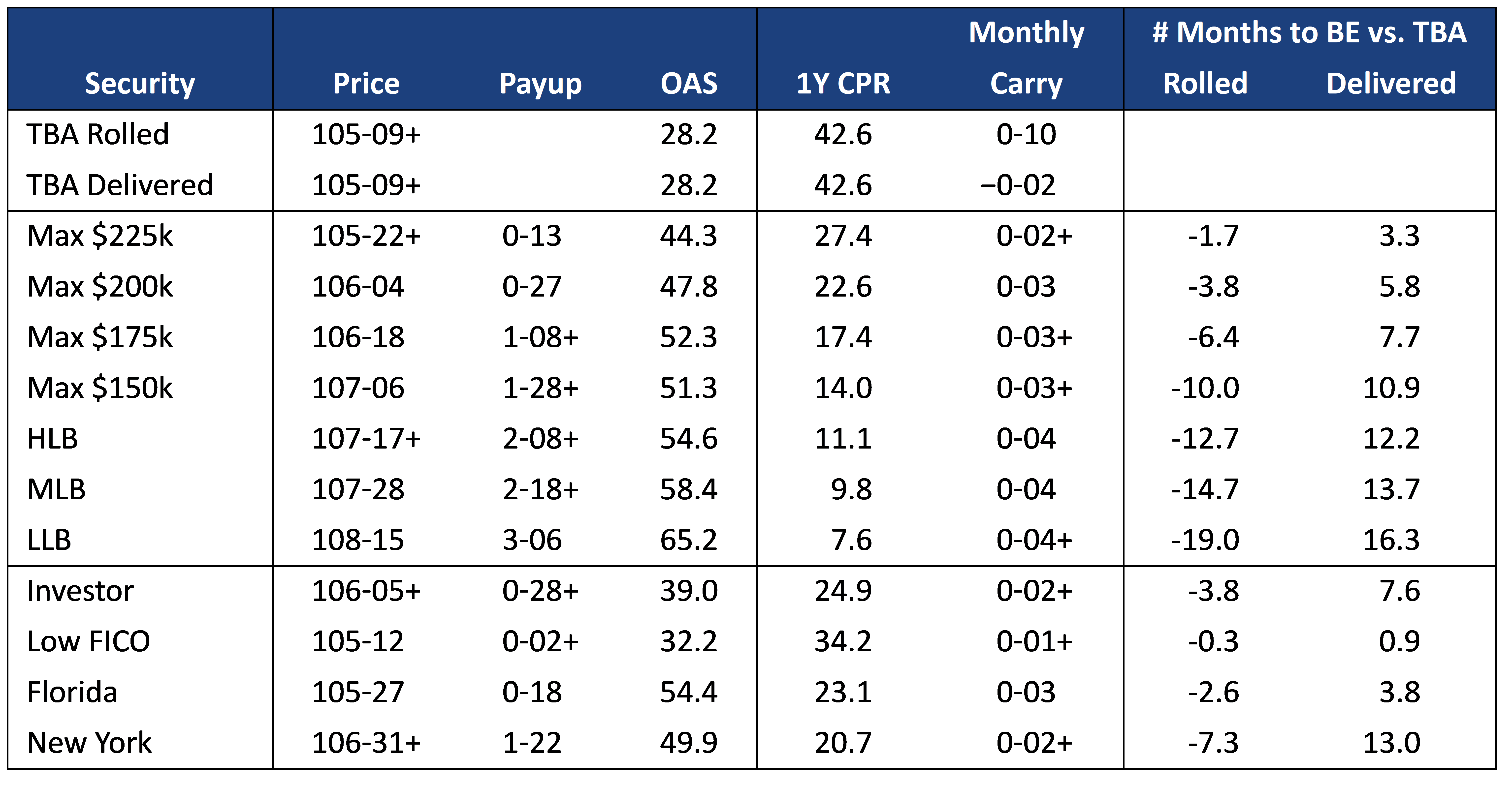Uncategorized
Screening for carry in new specified pools
admin | August 14, 2020
This document is intended for institutional investors and is not subject to all of the independence and disclosure standards applicable to debt research reports prepared for retail investors.
The TBA dollar roll these days may be the hottest spot for MBS carry in the market, but not all investors can get their MBS exposure by rolling contracts. Most banks and some other investors have to own pools and have to choose between taking delivery of TBA or buying specified. Some of the heaviest specified pool volume comes in new production, and a snapshot of the time needed for specified pool carry to cover the price premium to TBA points to good choices in pools backed by investment properties, low FICO loans, loans from Florida, and loans with balances between $150,000 and $225,000.
Calculating the time required for carry to cover price premium is a useful yardstick for investors concerned about current income. The breakeven is calculated by dividing the pay-up by the carry differential between the specified pool and the TBA. The TBA carry depends on whether an investor can roll their position, so it is useful to calculate the breakeven compared to both a rolled position and a generic pool. Calculating carry over a one-year horizon is a good match to the typical breakeven times.
Not every investor is concerned only about carry under a single interest rate path, of course. Some investors look for securities that can generate net interest income over a longer horizon and across a wide range of interest rates. They should look to OAS as a better metric to incorporate the value of the typically better convexity in specified pools. The best pool types for their portfolios might not offer the most current carry and take a long time to break even.
Screening UMBS 2.0%s
None of the specified pool stories in the UMBS 2.0% coupon carry better than rolling TBA, so the breakevens to rolling TBA are all negative. Most investors in this coupon will likely choose to roll. But investors unable to roll can recoup their pay-up fastest in some of the lower pay-up stories. Investor, low FICO, and 100% Florida pools all have pay-ups of less than 1-00 and break even in less than eight months. However, the low FICO pools’ OAS is very tight, indicating that Yield Book’s model does not think these pools will perform very well in other interest rate environments.
Exhibit 1: UMBS 2.0% Specified Pools

Note: the table shows pay-ups, OASs, and breakeven times for a variety of UMBS 2.0% pool types. All the specified pools are assumed to be new production with a 0 WALA. The first row shows monthly carry for an investor rolling TBA, and the second row is the carry for an investor that takes delivery of a generic TBA pool. The last two columns in the table show the breakeven vs. the rolled TBA position and vs. the delivered TBA pool. A positive breakeven is the number of months it takes to recover the pay-up, and a negative “breakeven” represents the number of months it takes to lose an amount equal to the pay-up. Monthly carry is the average carry over a 1 year horizon using 1 year prepayment speeds from Yield Book’s v99 model. Specified pools and delivered TBA positions use 0.46% financing rate. Source: Yield Book, Amherst Pierpont Securities
Screening UMBS 2.5%s
The picture is similar in 2.5%s—the best carry can be achieved by rolling TBA and the best carrying specified pools are the lower pay-up specified pools (Exhibit 2). The same low pay-up stories that carried well in 2.0%s also carry well in 2.5%s. But the lower pay-up loan balance pools—Max $175,000, Max $200,000, and Max $225,000–all look more attractive in this coupon. Low FICO pools also carry well but have very tight OASs, lower than TBA.
Exhibit 2: UMBS 2.5% Specified Pools

Note: Monthly carry is the average carry over a 1 year horizon using 1 year prepayment speeds from Yield Book’s v99 model. Specified pools and delivered TBA positions use 0.46% financing rate. Source: Yield Book, Amherst Pierpont Securities
Screening UMBS 3.0%s
The same pool types also offer the shortest breakevens in the 3.0% coupon (Exhibit 3). Max $225,000 pools, for example breakeven in merely 3.3 months because the pay-up has fallen to only $0-13. These pools pick roughly 16 bp OAS to TBA. The pay-up for low FICO pools is very low in this coupon, which results in a very short breakeven time and much better OAS than in lower coupons. These pools might be an attractive option to add a little extra carry and slightly better prepayment behavior than a generic pool with very little risk of losing the premium.
Exhibit 3: UMBS 3.0% Specified Pools

Note: Monthly carry is the average carry over a 1 year horizon using 1 year prepayment speeds from Yield Book’s v99 model. Specified pools and delivered TBA positions use 0.46% financing rate. Source: Yield Book, Amherst Pierpont Securities
TBA or not TBA, that is the question
With the TBA dollar roll hotter than Louisiana chili, total return portfolios should keep rolling contracts. As for investors looking for current carry, pools with relative low price premiums to TBA look like clear favorites.


